Business doesn’t stop when the weather takes a turn for the worse. Fleet vehicles are on the road for nearly 10-12 hours each day, making it extremely important for them to be well-prepared for all winter conditions. Keep reading on for an extensive guide of winter driving tips to keep your vehicles maintained and your drivers safe this winter, including a DIY solution that will defrost your windshield in seconds and a better alternative to tire chains.
Let’s dive in.
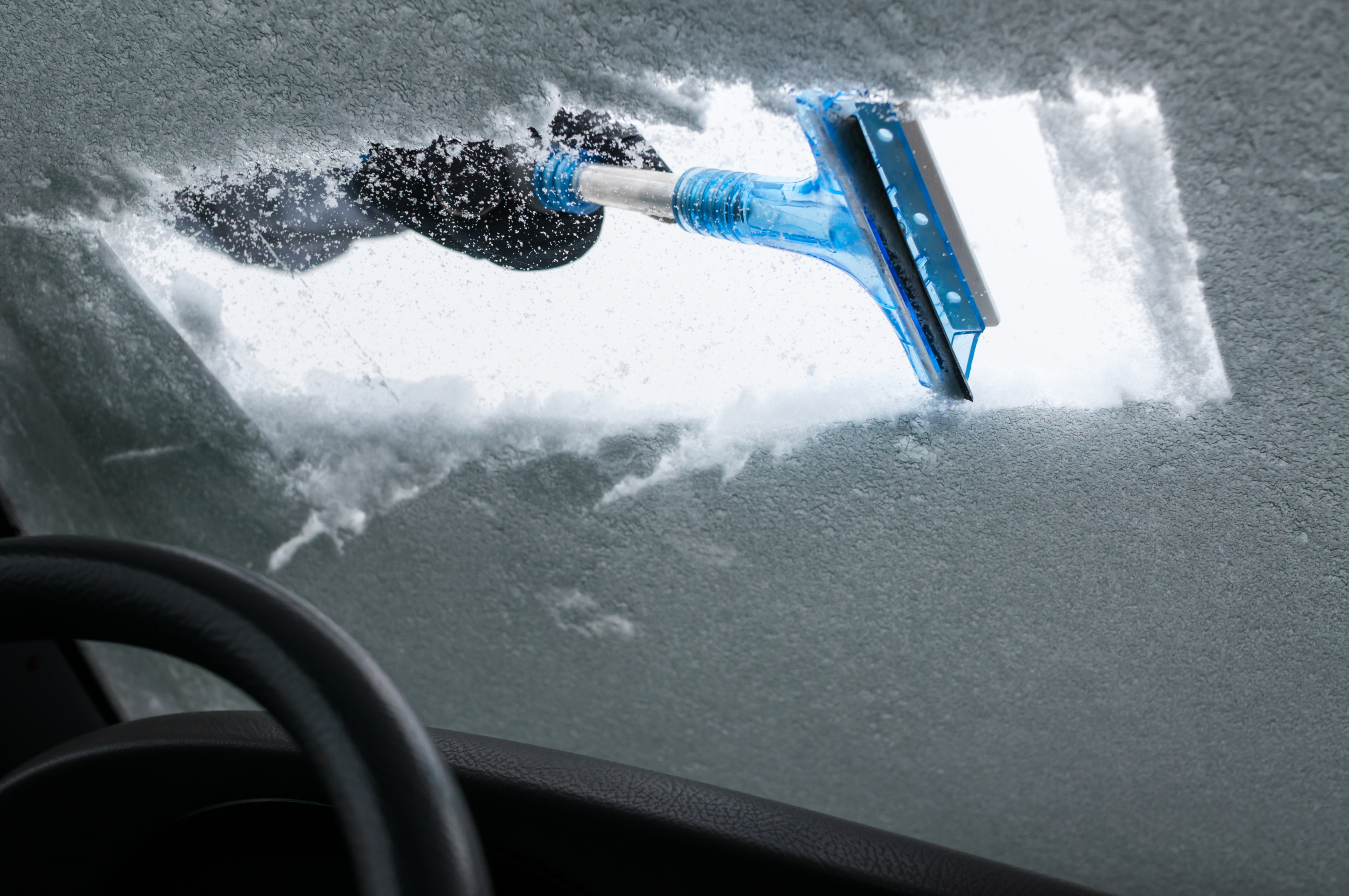
We know. You probably have somewhere to be in 15 minutes and forgot there is a gigantic layer of ice frozen over your windshield. However- repeat after me… we do NOT throw hot water on a frozen windshield.
It might seem like the quickest option, but what isn’t quick is waiting for your windshield to be repaired once it shatters from the steaming water.
Here are some best practices when it comes to defrosting your windshield fast:
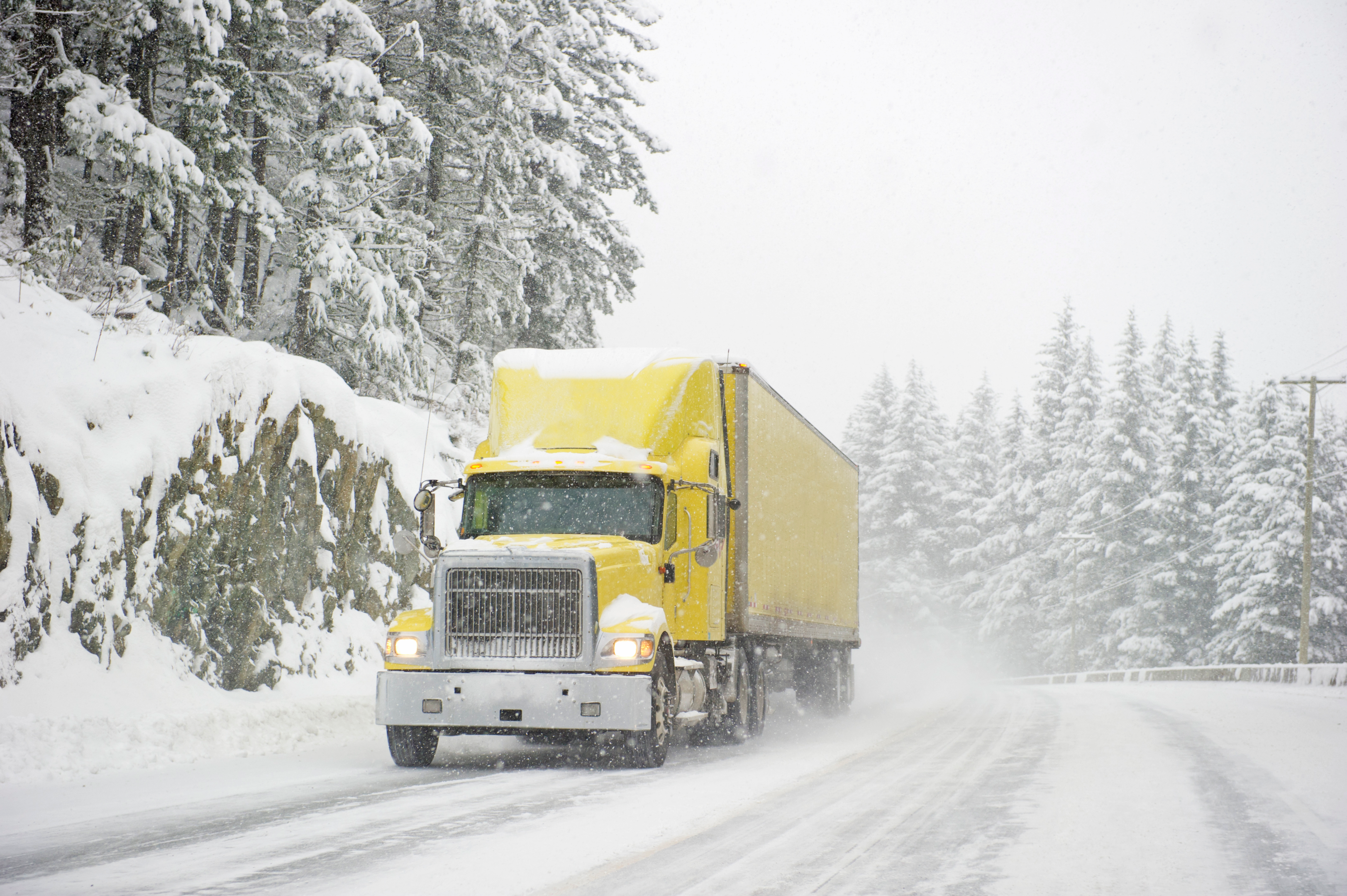
Before you hit the icy roads this winter, plan time to thoroughly inspect your vehicle inside and out to prevent any unforeseen complications on your journey. Add these inspection items to your checklist:
Basic tire care is essential to drivers’ safety, especially for those on the road during inclement weather.
Make sure you are checking tire pressure and tire treads before taking off. If your tire pressure is low, it can cause an increase in wear and tear on your tires, as well as affect your gas mileage. If tread wear is prominent, you are more prone to losing traction when driving on slippery roads. You may even consider switching from all-weather tires to winter tires for superior traction in harsh conditions.
Drivers also want to ensure that each of their tires has a valve cap at all times. This will prevent dirt, debris, and water from damaging the valve, so air does not leak from the tire.
When it comes to tire replacement, experts suggest that semi-trucks should replace their old tires with new ones every 3-6 years.
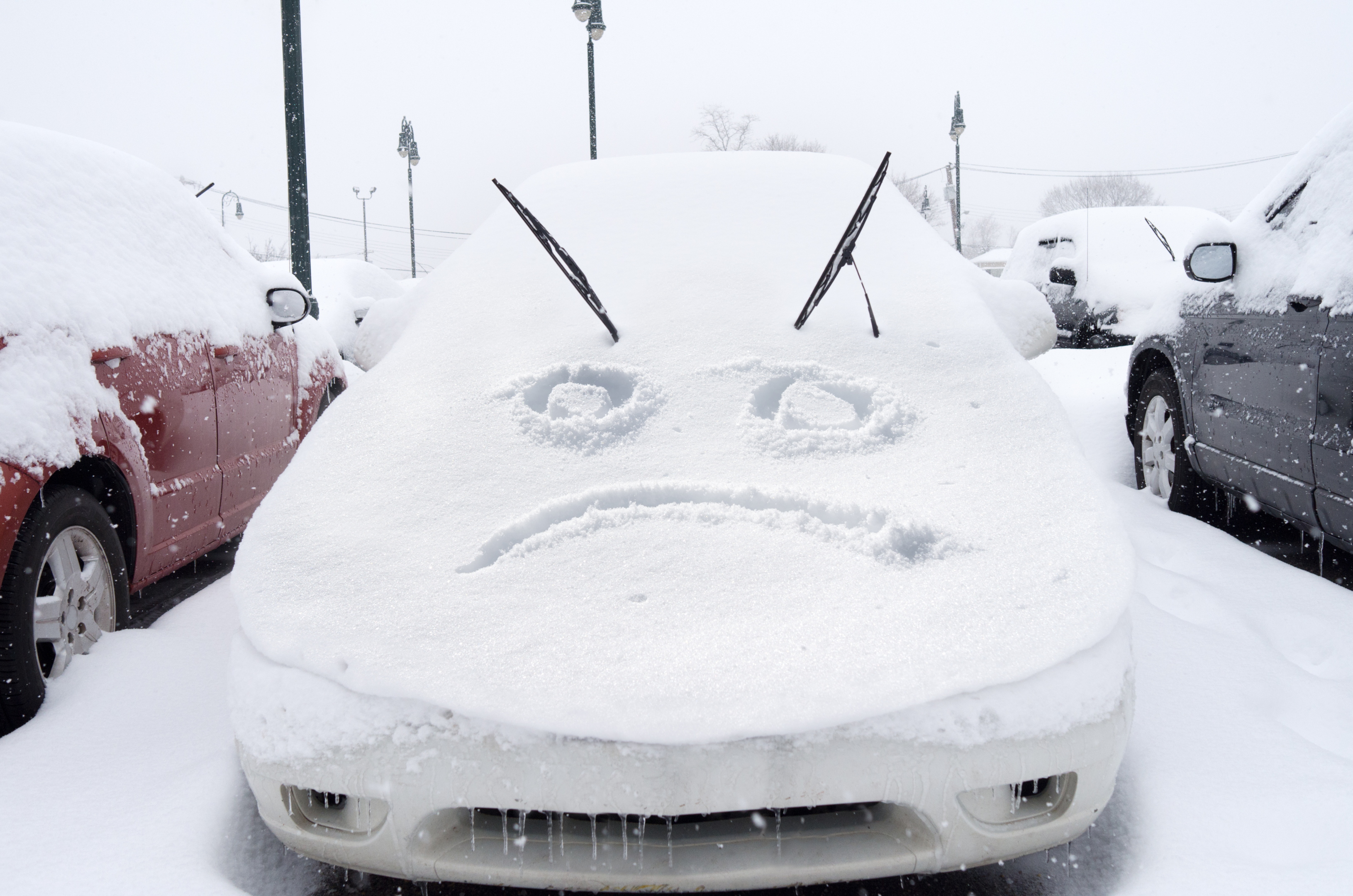
This step is often overlooked, but actually one of the most important.
Without efficient windshield wipers, drivers do not have safe and proper visibility of the road. This becomes even more detrimental in the winter if wiper blades cannot effectively clear rain, snow, and dirt from the driver’s view.
Fleet vehicles should have their windshield wipers replaced before each winter. Heavy-duty winter-grade wiper blades are also a good idea for those in areas with more extreme cold weather. To play it safe, it never hurts to carry an extra set of windshield wipers and sub-zero windshield wiper fluid in case of a bad weather emergency.
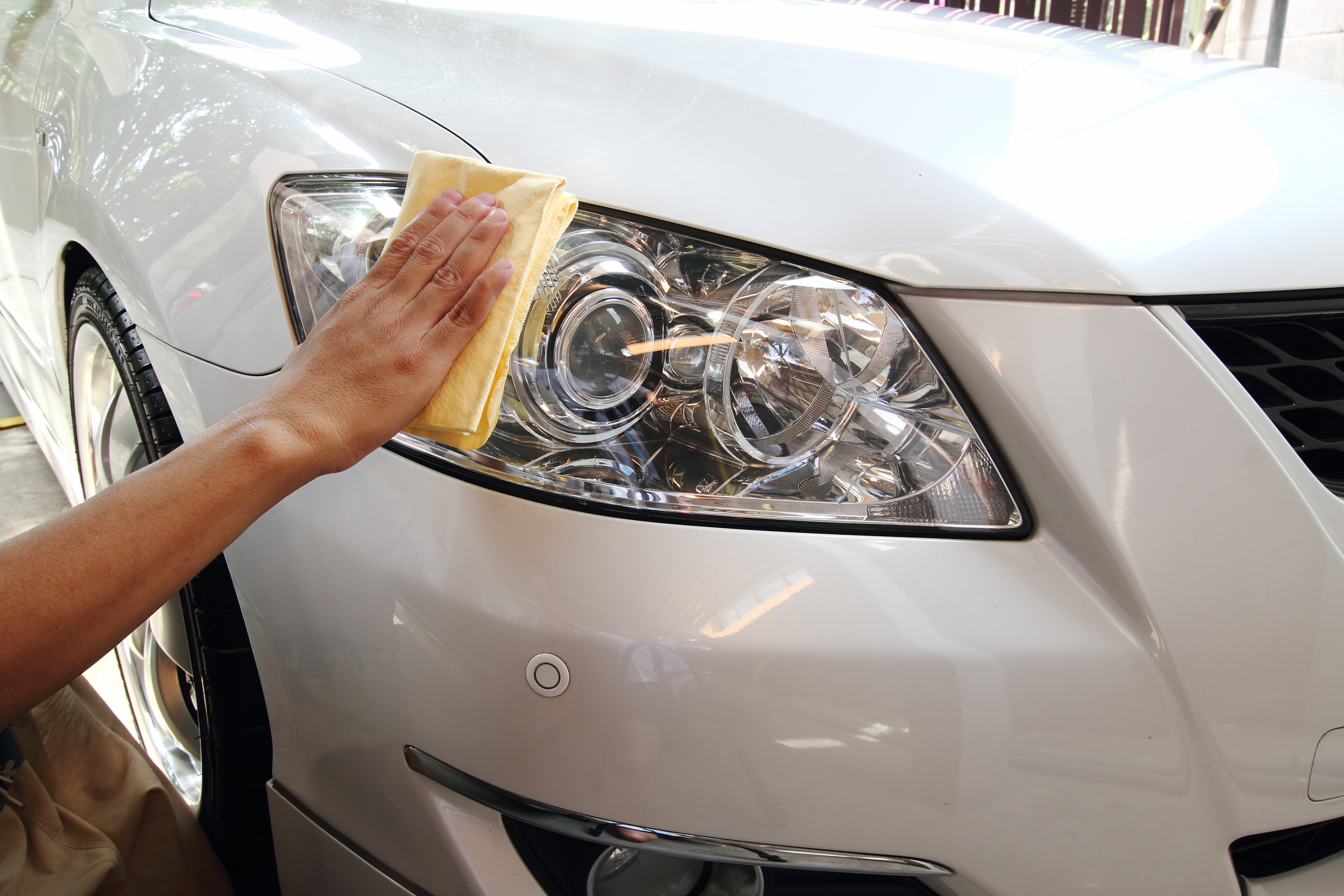
Drivers should always make sure to check their vehicle’s lights before their shift to ensure they have complete visibility on the road- especially in wintry conditions. You want to clear your headlights, taillights, brake lights, and signal lights of any dirt or snow before taking off.
Notice your headlights are foggy even after cleaning them?
If you do not have time to purchase a headlight restoration kit before your trip, try this simple solution: toothpaste, baking soda and synthetic wax.
Toothpaste and baking soda will help polish and shine your headlights while taking the fog off without damage. Use these two products alone or in tandem to scrub away years of UV damaged clear coat on your headlights, then grab a towel to buff away any leftover residue. Rinse them off with some water, dry, and then apply a layer of synthetic wax to the headlight and you are good to go for a couple of months!
Checking lights is essential to keeping yourself and other drivers safe on the road when the temperature drops this winter.
Before low temperatures hit, plan ahead and top off your vehicle’s engine fluids to avoid unnecessary downtime.
Take time to examine-
Heavier engine oil will make it difficult for a vehicle’s engine to lubricate effectively in the winter. Try switching to an oil with lower temperature viscosity during the winter to prevent engine wear.
Also, remember to keep your gas tank at least half full. Freezing temperatures can cause condensation to build up on the inside of an empty gas tank which eventually can sink to the bottom and freeze, causing a block in the flow of fuel to the vehicle’s engine. That is one costly repair that you want to avoid.
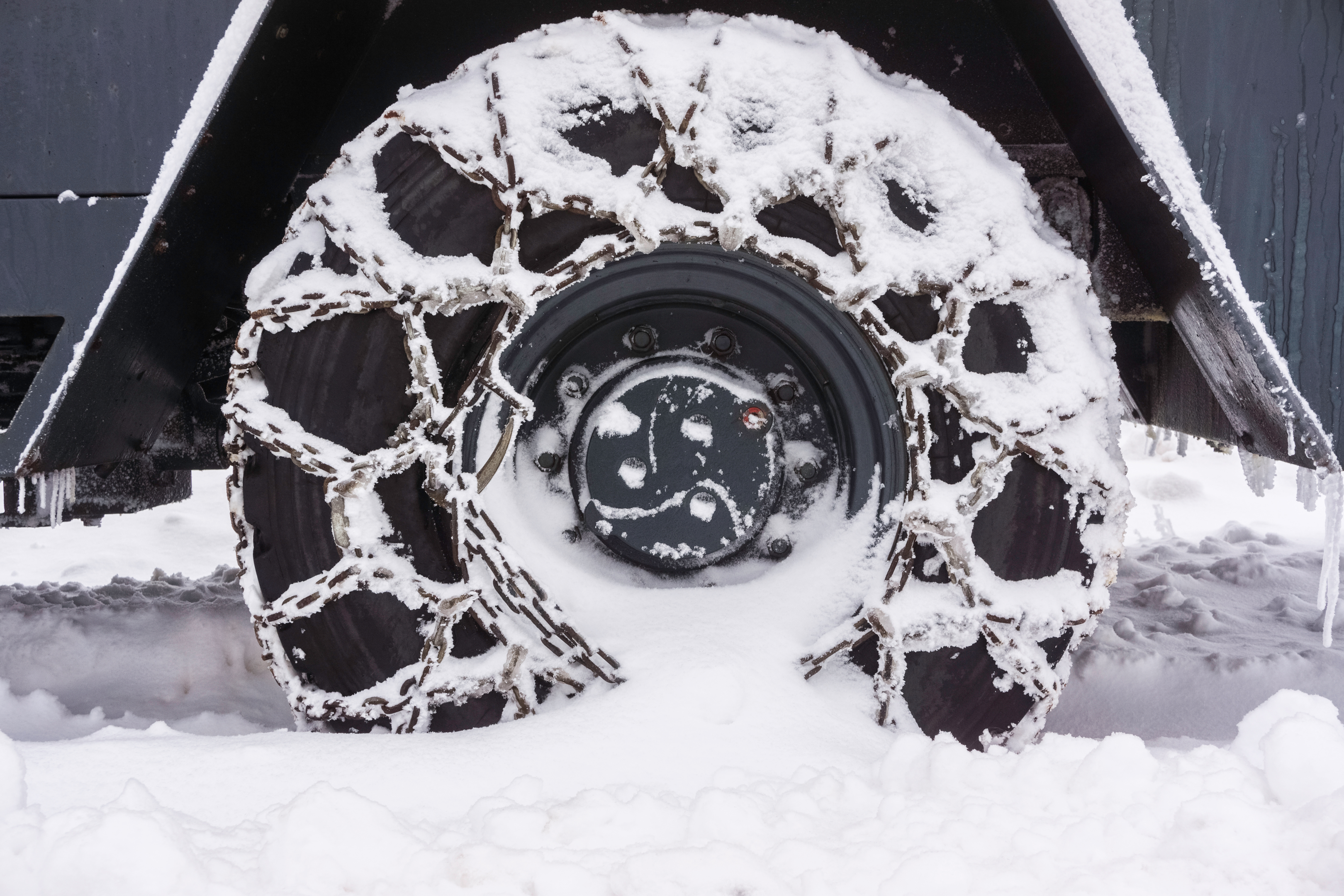
Every state has regulations in place regarding the use of tire chains, so it’s imperative drivers become familiar with those laws in the states they plan to be in throughout the winter months.
Here is a list of tire chain laws by state.
If you are looking for an alternative to chains in the U.S., AutoSock has been approved for winter driving in all 50 states. Autosock has been authorized for vehicles with weights even beyond 10,000 lbs and is used on semi-trucks regularly.
Autosock (also known as snow socks) is pulled over a vehicle’s tires for extra traction in snow and ice conditions to wick away water between the ground and tire, helping to maximize the tires’ grip.
It never hurts to be overly prepared. In this case, packing a bag with extra cold-weather gear is critical in the winter months. Here are some items we suggest you pack in your winter emergency kit:

Freezing temperatures call for extra caution while on the road. With black ice, snow storms, rain, and more, drivers should practice these safe driving tactics to keep themselves and other motorists out of harm’s way:

With winter weather comes many unpredictable conditions on the road. This is when it becomes crucial for fleet managers to know where their drivers are at all times.
With GPS fleet tracking software, managers have complete visibility of their drivers’ location, making it easier to dispatch help in an emergency or see where their driver got caught in bad weather. Fleet managers can use this location data to inform customers of any delays that may occur due to weather.
Winter weather can be foul, which is why it’s the most important time of year to examine your vehicles and make sure everything is running smoothly for the season. It might take a little extra time to prepare for cold temperatures, but it is well worth it.
Psssst… Want to see how our fleet management tools can help you keep your fleet safe and on the road?
Grab a free demo.
Do it.
Do it now.
Right down here. ⬇️

Recent Posts
Stay in Touch
Ready to make fleet management more manageable?
Schedule your demo today!